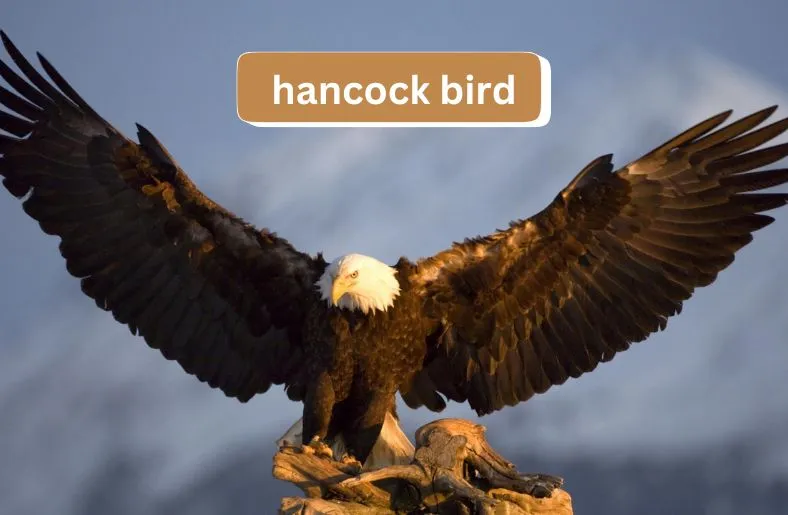Introduction
Welcome to the “Hancock Bird Chronicles.” This blog explores the marvel of the Hancock Bird. This unique bird is full of beauty and wonder. Its colorful feathers and graceful flight capture our imagination.
In this post, we will discover what makes the Hancock Bird special. We will learn about its habitat, behavior, and the challenges it faces. We will also explore its role in nature and why it is important to protect it.
The Hancock Bird teaches us valuable lessons about resilience and adaptability. By understanding this bird, we can appreciate nature more deeply. Join us as we delve into the fascinating world of the Hancock Bird. Let’s uncover the secrets of this amazing creature and find out how we can help ensure its future.
The Beauty and Grace of the Hancock Bird
The Hancock Bird is a true marvel of nature. Its feathers are a kaleidoscope of colors, shimmering in the sunlight. This vibrant plumage makes it one of the most beautiful birds in the world.
Watching the Hancock Bird in flight is like watching a ballet in the sky. It moves with incredible grace and precision. Each wingbeat is smooth and controlled, allowing it to glide effortlessly. When it soars, it seems as if it is dancing with the wind.
The Hancock Bird’s elegance is not just in its appearance but also in its behavior. It takes great care in grooming its feathers, ensuring they are always in perfect condition. This meticulous grooming routine highlights the bird’s attention to detail and its dedication to looking its best.
Moreover, the Hancock Bird’s movements are fluid and purposeful. Whether it is darting through trees or hovering in mid-air, it exhibits remarkable agility. This agility helps it navigate its environment with ease, avoiding predators and catching prey.
The Hancock Bird’s beauty and grace serve as a reminder of the wonders of nature. It inspires us to appreciate the delicate balance of the ecosystems around us. By observing this bird, we can learn to see the world with a greater sense of wonder and respect.
The Symbolism and Cultural Significance of the Hancock Bird
The Hancock Bird holds deep symbolism and cultural significance. In many cultures, it represents freedom and transcendence. Its ability to soar high in the sky is seen as a symbol of liberation and reaching new heights.
In mythology, the Hancock Bird is often linked to renewal and hope. Its vibrant colors and graceful flight inspire people to embrace change and find beauty in life’s transitions. Many believe that seeing a Hancock Bird is a sign of good luck and positive change.
The Hancock Bird also symbolizes resilience. Despite facing many challenges in its environment, it adapts and thrives. This resilience resonates with people, reminding them to stay strong and persevere through difficulties.
Artists and writers frequently use the Hancock Bird as a muse. Its stunning appearance and symbolic meanings make it a powerful subject in art and literature. Through various creative expressions, the Hancock Bird continues to inspire and captivate audiences.
Moreover, the Hancock Bird’s role in nature teaches us about interdependence. It plays a crucial part in pollination and seed dispersion, highlighting the interconnectedness of all living things. This lesson of mutual reliance emphasizes the importance of preserving natural habitats and biodiversity.
Survival and Adaptability: The Tenacity of the Hancock Bird
The Hancock Bird is a remarkable symbol of survival and adaptability. It faces many challenges, yet it always finds ways to thrive. This bird’s ability to adjust to changing environments is truly inspiring.
One key to its survival is its flexible diet. The Hancock Bird eats a variety of foods, from insects to fruits. This adaptability allows it to find nourishment even when resources are scarce. Moreover, it changes its foraging habits based on seasonal availability, ensuring it always has enough to eat.
The Hancock Bird is also known for its innovative nesting practices. It builds nests in diverse locations, from tree branches to urban structures. This flexibility helps it avoid predators and adapt to different habitats. Additionally, its nests are sturdy and well-hidden, providing a safe space for raising its young.
Climate change poses a significant threat, but the Hancock Bird adapts. It adjusts its migration patterns and breeding seasons to cope with shifting temperatures. This ability to change behavior ensures its continued survival in a warming world.
Human activities can disrupt natural habitats, yet the Hancock Bird finds new opportunities. It often thrives in urban areas, using parks and gardens as new habitats. This adaptability highlights its resilience and resourcefulness.
Interdependence in the Ecosystem: The Hancock Bird’s Role
The Hancock Bird plays a crucial role in maintaining ecosystem balance. Its daily activities support various aspects of the environment, highlighting nature’s interconnectedness.
Firstly, it helps with pollination. As it feeds on nectar, it transfers pollen between flowers. This process is essential for plant reproduction and biodiversity. Without the bird’s help, many plants would struggle to reproduce and spread.
Additionally, the Hancock Bird controls insect populations. It consumes large numbers of insects, preventing overpopulation. This natural pest control supports plant health and reduces the need for chemical pesticides. Healthy plants, in turn, provide food and shelter for other creatures.
Seed dispersal is another important role. The Hancock Bird eats fruits and later excretes the seeds in different locations. This action helps plants grow in new areas, promoting forest regeneration and diversity. New plant growth creates habitats for various species, enhancing ecosystem richness.
Moreover, it serves as prey for larger predators. Its presence in the food chain supports the survival of these animals. By being a food source, it helps maintain predator populations and overall ecological balance.
The Hancock Bird’s nesting habits also contribute to the ecosystem. Its nests provide shelter for other small animals once abandoned. This reuse of resources supports the survival of various species, illustrating nature’s efficiency.
Conservation Efforts and the Future of the Hancock Bird
The future of the Hancock Bird depends on effective conservation efforts. Protecting this bird is crucial for maintaining biodiversity.
Firstly, habitat preservation is essential. Establishing protected areas ensures the bird has safe places to live and breed. These areas should be free from deforestation and human interference.
Next, reducing pollution is important. Pollutants can harm the Hancock Bird’s health and food sources. Clean air and water are vital for its survival. Efforts to reduce chemical use in agriculture also help, as pesticides can be harmful.
Community involvement plays a significant role. Educating people about the bird’s importance encourages local conservation actions. Community members can participate in monitoring bird populations and protecting nesting sites.
Research is another key aspect. Scientists study the Hancock Bird’s behavior and needs to develop better conservation strategies. Understanding its migration patterns, breeding habits, and diet helps create effective protection plans.
Additionally, supporting conservation organizations is crucial. These groups work tirelessly to protect the Hancock Bird and its habitat. Donations and volunteer work can provide them with the resources they need.
International cooperation can amplify these efforts. Many bird species migrate across borders, so global conservation strategies are necessary. Countries working together can create larger protected areas and share research findings.
Lessons from the Hancock Bird: Inspiration for Life
The Hancock Bird offers many lessons that can inspire our lives. Its journey through nature shows us the power of resilience.
Firstly, the bird’s adaptability is a key lesson. It survives in changing environments by being flexible. We can learn to adapt to life’s challenges with the same spirit.
The Hancock Bird’s grace in flight teaches us about the beauty of simplicity. It moves effortlessly, reminding us to find joy in simple moments. This bird shows that elegance comes from within, not from complexity.
Its perseverance is another important lesson. Despite obstacles, the Hancock Bird continues to thrive. This teaches us to keep going, even when life is hard. Persistence leads to success and growth.
The bird’s role in its ecosystem highlights the value of interdependence. It shows us that everyone has a part to play in a larger community. Working together, we can achieve more and support each other.
Furthermore, the Hancock Bird’s ability to find new food sources in tough times shows creativity. It teaches us to think outside the box and find solutions in unexpected places. Innovation is key to overcoming difficulties.
Lastly, the bird’s presence reminds us of nature’s beauty and the need to protect it. By appreciating and caring for our environment, we ensure a better world for future generations.
Conclusion
The Hancock Bird inspires us with its beauty, resilience, and adaptability. By appreciating its role in nature, we understand the importance of protecting our ecosystems. This bird teaches us valuable lessons about perseverance, interdependence, and creativity. As we work to conserve its habitat and reduce pollution, we ensure a thriving future for the Hancock Bird and many other species. Embracing the lessons from the Hancock Bird can lead to a deeper connection with nature and a greater commitment to environmental stewardship. Let’s join efforts to protect this remarkable bird and celebrate the wonders of the natural world.





